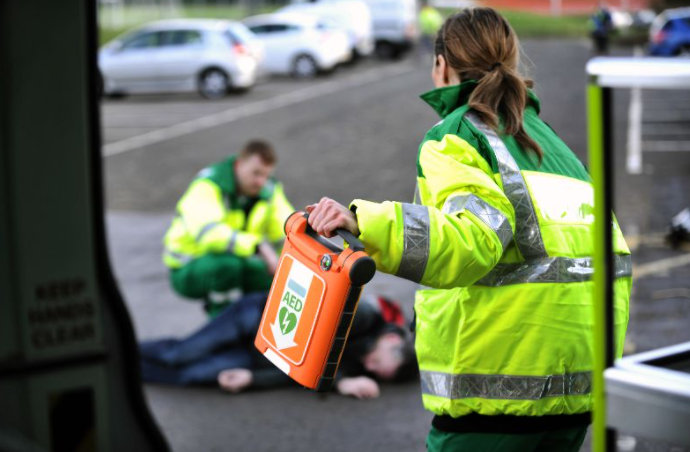Headlines
- Advanced Footcare Solutions: Use Cases Explained
- Keeping Customers Covered: How Pharmacies can address the Summer Burn Surge - A clinical and practical guide for pharmacy teams
- Fleming Medical Achieves ISO 13485 Certification – Reinforcing Our Commitment to Patient Safety and Quality
- Gentle Daily Ear Care with Medicare Ear Spray
- Breathe Easy with Medicare Nasal Spray
Why your Workplace Needs an AED
16 October 2020

Friday the 16th of October marks Restart a Heart Day. The aim of Restart a Heart Day is to bring awareness, education and training to the general public in order to increase the likelihood of lives being saved in the event of a heart attack.
SCA (Sudden Cardiac Arrest) affects over 350,000 people in Europe each year which is why it is important to have an AED (Automated External Defibrillator)in the workplace. Ensuring your place of work is equipped with an AED for such emergencies can save lives and provide peace of mind.

SCA is when an electrical malfunction of the heart causes it to suddenly stop beating. This can happen within a spilt second and there are usually no warning signs. Symptoms of SCA include collapsing, no pulse, and loss of consciousness and breathing. It can often be caused by having high blood pressure, obesity, smoking, high cholesterol levels, congenital heart disease and diabetes. Although these causes can contribute to SCA, it can affect children and adults of all ages and is not exclusive to those with a history of heart problems.
To help a victim of cardiac arrest, CPR (cardiopulmonary resuscitation) must be carried out to restore blood flow to the brain and heart. An electrical shock from a defibrillator must be administered from a defibrillator to stop erratic heartbeats and help restore the hearts natural rhythm. Quick thinking is vital, if effective bystander CPR is given immediately after cardiac arrest, the victim’s chance of survival is doubled. Only 5% of victims have a chance of surviving waiting for emergency services to arrive. If bystanders intervene and maintain CPR and use an AED machine, that chance of survival jumps to 60%.
Due to recent advances in technology, an AED is very easy to use, even for someone using it for the first time. A shock can only be administered if it is needed and most AEDs prompt the user with each step and will wait until all steps are carried out before the electrical current is given. An AED should be in the workplace as most cardiac arrest deaths occur outside the hospital and suddenly without warning. Jobs with shift work, high stress and exposure to certain chemicals and electrical hazards increase the risks of heart disease and cardiac arrest. Having an AED in the workplace, along with a proper management system and training for employees on how to use the device, could mean the difference between life and death.
Check out our AED Infographic that explains why having an AED in the workplace is so important.
Looking to learn more about what AED might be best for your workplace? Take a look at our AED product offerings hereor contact us today to find out more about what kind of packages and servicing would work best for you.

 Fleming Medical UK
Fleming Medical UK
